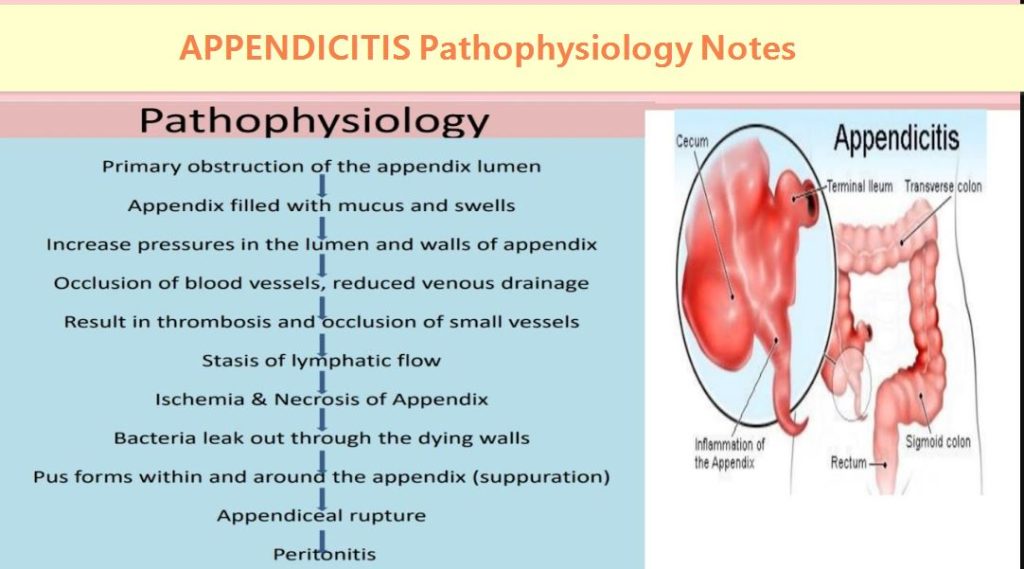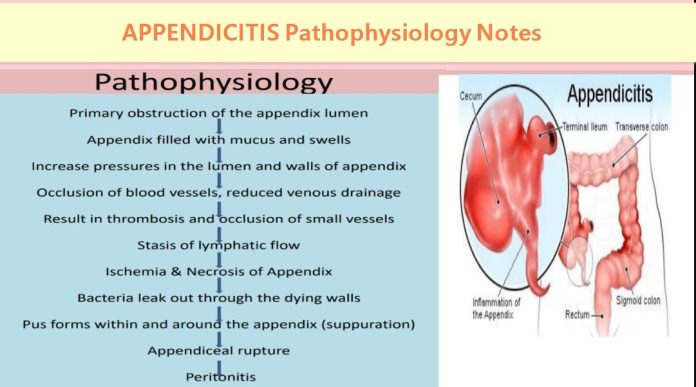Anatomy of appendix
- It is a blind muscular tube with mucosal, submucosal, muscular, and serosal layers. It is a vestigial organ.
- The appendix varies considerably in length and circumference.
- The average length is between 7.5 and 10 cm.
Function of Appendix
- 1. Immune function (contains lymphoid tissue which is involved in the immune response)
2. Vestigial structure (complete or partial loss of function associated with evolutionary development)
3. Maintain normal gut bacteria (Storage for good bacteria to help repopulate the colon following a pathogenic infection that cleans out the colon – such as pathogens which cause diarrhoea)
Introduction
- Appendicitis is the acute inflammation of the vermiform appendix that occurs most often in young adults.
- This is the most common surgical emergency.
- Uncomplicated vs Complicated appendicitis
•Uncomplicated appendicitis
• Is defined as an inflamed But grossly intact, non-gangrenous, non-suppurative appendix with no associated abscess or peritonitis.
•Complicated appendicitis
- Is defined as a gangrenous appendix, suppurates, grossly perforated, or associated with an abscess or peritonitis.
Predisposing Factors
- Age: 20-30 years (peak incidence in early 20s)
- Lymphoid hyperplasia of the appendix
- Fibrosis of the appendix of previous damage
- Obstructive causes- faecolith
- Bacterial proliferation: mixed growth commonest is Streptococci and E. Coli.
- Intestinal parasites – Oxyuris Vermicularis(pin worm)
- Tumor (Ca of the Caecum) in elderly & middle age.
Pathophysiology

Clinical features
- Pain
- Pain shift to right iliac fossa
- Anorexia
- Nausea/vomiting
- Pyrexia
- Localized tenderness in the right iliac fossa
- Muscle guarding
- Rebound tenderness
- Gastric cancer
- Cancer of Stomach
INTRODUCTION
- Stomach cancer is a neoplasm that can develop in any portion of the stomach and may spread to the lymph nodes and other organs.
- Most common tumours are adenocarcinoma.
- Gastric cancer is the sixth most frequently diagnosed cancer and the fourth leading cause of cancer deaths worldwide.
Epidemiology
- Stomach cancer is the third most common cause of death from cancer. The World Health Organization estimates that in 2018, gastric cancer accounted for 783,000 deaths worldwide.
- Gastric cancer is the fifth most common cancer and the third leading cause of cancer deaths. (Nepal 2020 cancer profile WHO)
Risk Factor
- H. Pyloric infection
- Epstein-Barr virus infection
- Gender: Stomach cancer is more common in men than in women.
- Aging: There is sharp increase in stomach cancer after the age of 50. Most people diagnosed with stomach cancer are in their late 60s, 70s and 80s.
- Ethnicity: It is more common in Asian/Pacific Islanders.
- Diet: An increased risk of stomach cancer is seen with diets containing large amount of smoked foods, salted fish and meat and pickled vegetables.
- Nitrates and nitrites are substances commonly found in cured meats. They can be converted into bacteria such as H. Pyloric, into compounds that have been found to cause stomach cancer in animals.
- Tobacco use
- Occupational exposure to rubber manufacturing, tin mining, metal processing and coal.
- Type A Blood: For unknown reasons, individuals with type A blood have increased risk of developing gastric cancer.
- Family history of gastric cancer
- Previous stomach surgery
- Pernicious anaemia, an autoimmune chronic atrophic gastritis,
- Benign gastric ulcers
Clinical features
- Indigestion
- Nausea or vomiting
- Pain
- Dysphagia
- Postprandial fullness
- Loss of appetite
- Melena or pallor from anemia
- Hematemesis
- Weight loss
- Palpable enlarged stomach
- Enlarged lymph nodes
